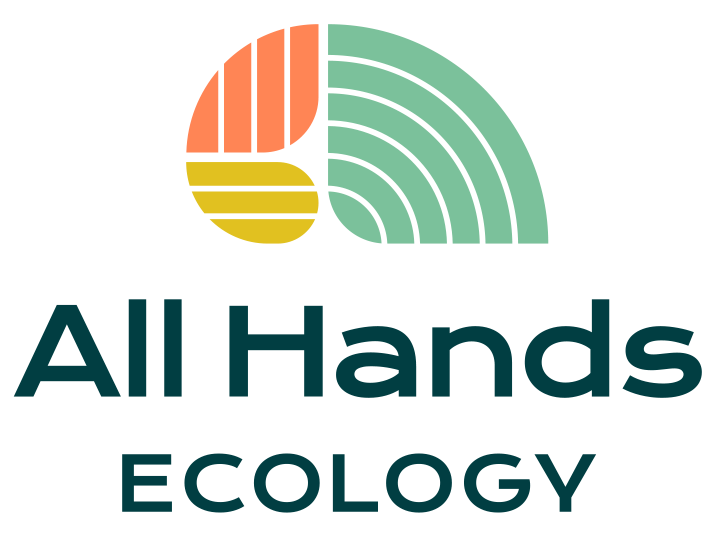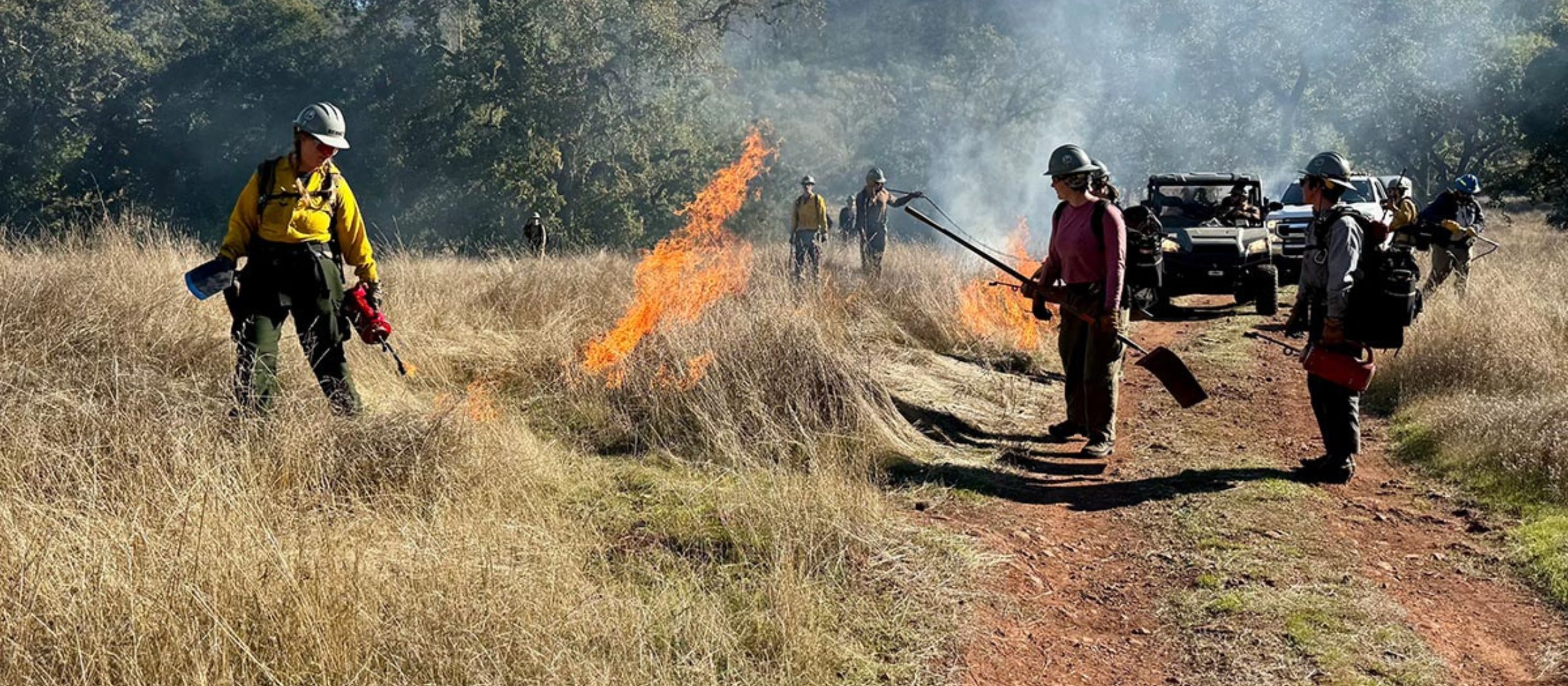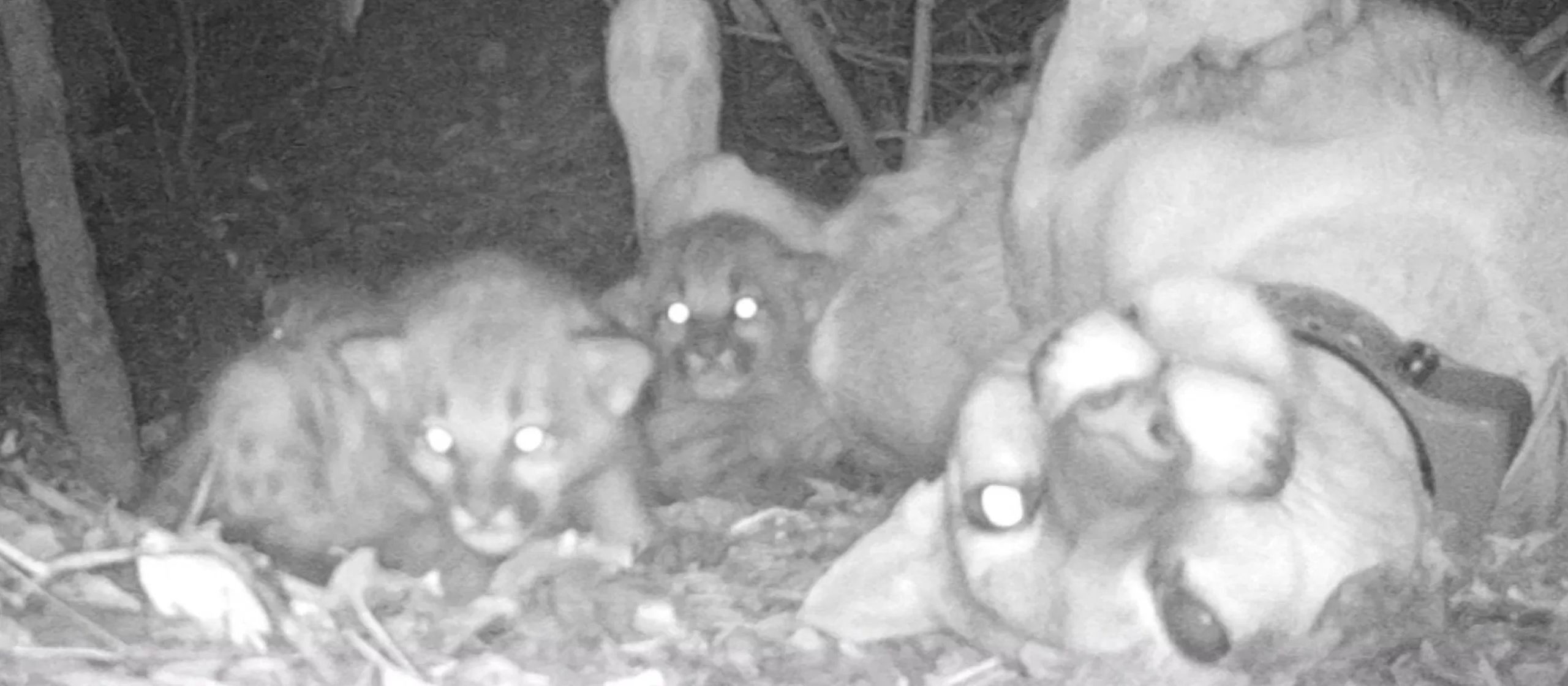|
Getting your Trinity Audio player ready...
|
How did your fire journey begin?
Berkey: Frogs brought me to fire. You wouldn’t think the two connect, right? My undergrad major was ecology and evolutionary biology, and by pure happenstance as a work study student I ended up in a herpetology lab. Even though I ultimately decided herpetology wasn’t my calling, my summers spent catching frogs absolutely influenced where I am now.
I was working as a field technician for a master’s student in a wildlife biology lab at the University of Wyoming studying the Bighorn Mountain’s Colombia spotted frog population. We were living in the same compound as their firefighters, and though most of the fire crew was straight up suppression, a few had a background in forestry who taught me to see things in a different way. Coming from the East Coast, I assumed that the dense forests we were tramping through to catch frogs were healthy. Learning to see through their eyes, however, I saw the forest was way denser and more uniform than it would have been. Here I am working on a small animal in the grand scheme of ecosystems, and they’re pointing out broad patterns and processes that are impacting everything that’s part of it.
That field season was my first job out of college, and it was the seed that grew into my current passion for restoring fire as a landscape process and community practice. After that season, I spent four more years working field jobs across the West. During that time, I learned more and more about forestry and fire ecology, and I came to understand fire as a fundamental ecosystem process.
This led me to pursue a master’s researching wilderness fire. It was here that the importance of social and political systems to restoring good fire really hit home. My research on wilderness fire was not just a long thesis on fire and impact on stand structure, but also what social factors allow us to be successful in managing fire to build on ecological knowledge. A couple lightbulbs went off — we can’t just be thinking about ecology, we need to think about our social systems as well.

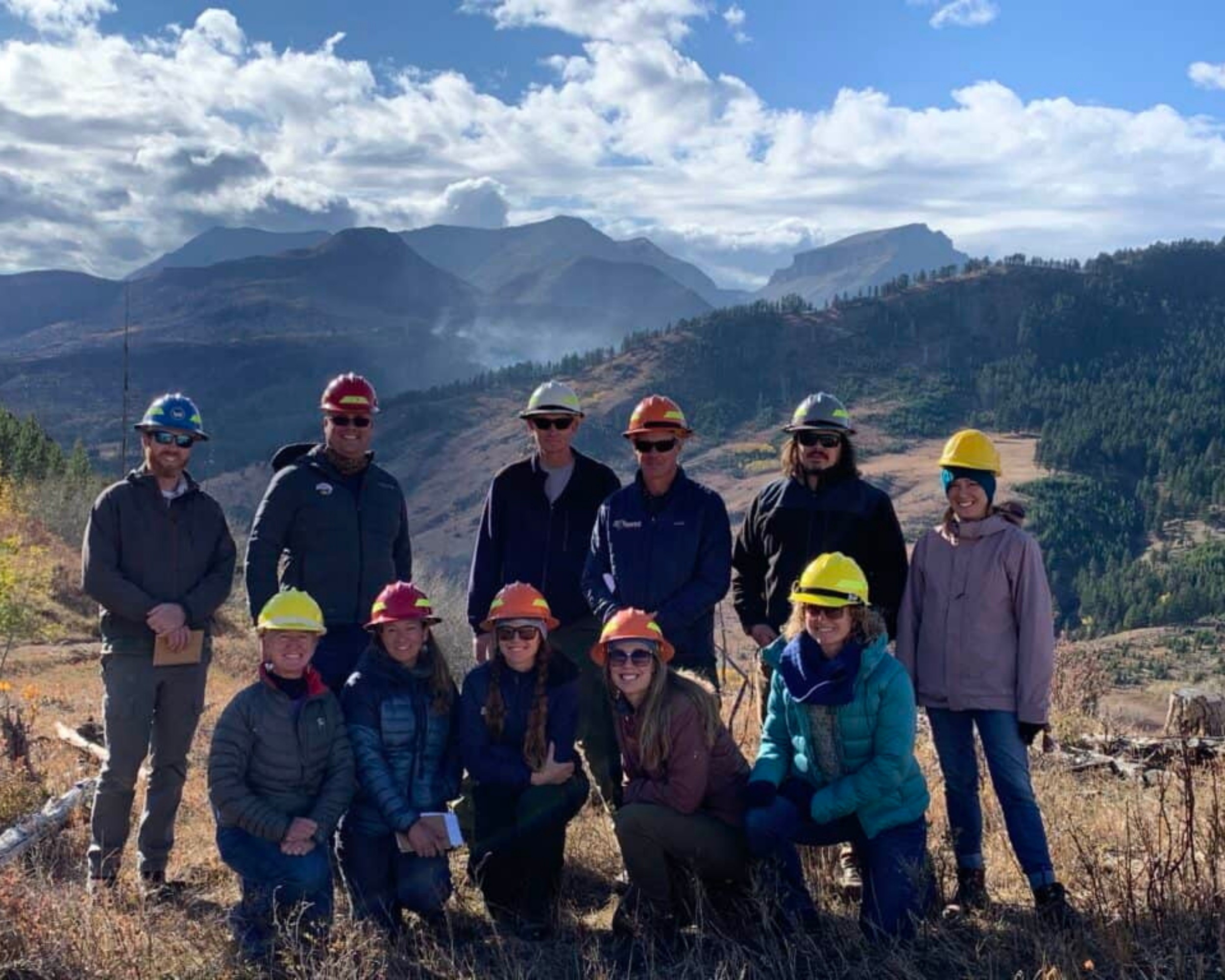
How did you start connecting social systems with ecology?
Berkey: I spent five years with Montana’s Department of Natural Resources and Conservation (DNRC). I started as a forestry outreach specialist. This role was split on assisting forest landowners with getting resources to become more wildfire resilient and coordinating the Fire Adapted Montana Learning Network. The Network allowed me to work with groups of practitioners from across the state who were working in wildfire resiliency. I came to learn what they needed and develop more resources to meet shared needs. Sometimes that looked like materials and booklets, but more often than not what they really needed was connection and learning opportunities. So often in Montana those people are working within silos within their own organizations, so the Fire Adapted Montana Learning Network provided them with opportunities to connect and learn from each other. I really loved creating those networks and connecting them to others like them.

How did that work relate to building fire adapted and resilient communities?
Berkey: My last role before joining All Hands Ecology was Community Preparedness and Wildfire Prevention Program Manager for the DNRC. I was the point of contact across the state for community wildfire resiliency work, connecting federal, state, county, and NGO partners to build a more wildfire resilient state of Montana. The Community Preparedness team grew a lot in the time I was there, which allowed us to really tailor our work to the local communities and their needs and wants. We were also able to really grow our role in things like prescribed fire, resources to write better Community Wildfire Protection Plans, and administering more grants to fund the work.
We accomplished a lot. But nowhere in Montana has there been a Camp Fire or Tubbs Fire. We haven’t yet had the same devastating wildfires as Northern California, so we were trying to make a change without the catalyst.

What challenges are you looking forward to as the new director of prescribed fire?
Berkey: There are challenges in learning every new ecosystem and unique fire ecology. And while the partnerships here are an opportunity that I’m really excited about, I need to learn the very complex social web that exists in this place. I can bring my background in community resiliency and systems ecology, but I know I can’t come in with a set solution — I need time to understand the local culture, the history, and stories that surround them. I’m looking forward to understanding systemic challenges and identifying ways we can improve how that work gets done with those partners.
Luckily, there’s an awesome team and many partners and community members who are deeply invested in this work. I know I have a lot of learning and listening to do to fully step into a director role here, but this is exactly where I want to be — and it’s why I packed up my whole life and moved across the country to be here.
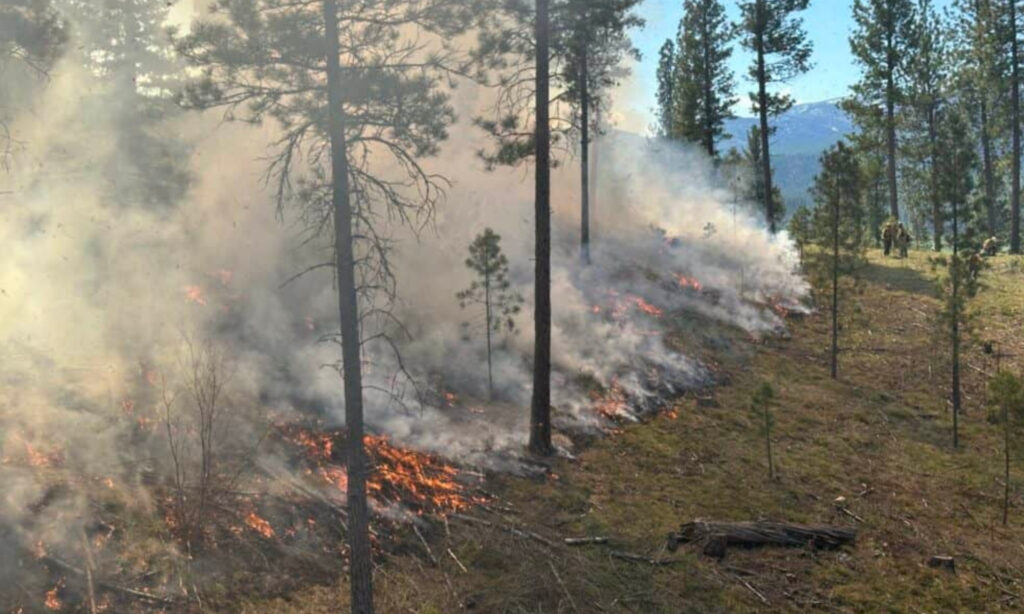
What excites you most about your new role?
Berkey: Working at the state level with the DNRC was awesome because you get to move the needle on policy in a direct way and help connect people doing all this good work. Working with my last team to build the Montana Prescribed Fire Council and organize the state’s first Prescribed Fire Training Exchange (TREX) was so fulfilling. I was lucky to occasionally go out and put prescribed fire on the ground, but I really missed being directly involved. It was hard to get out regularly because I was getting pulled in so many different directions, and that degree of separation was really tough.
This is the dream job. I’m very excited to work with a place-based organization, to create meaningful change at a local level. Working with an organization that places people and ecology at the forefront together, with a significant focus on community and partnerships is exactly where I want to be. I’m excited to be on the ground again and working with an organization that approaches fire restoration as a piece of a larger, integrated (socio-ecological) system, impacting everything from the tiniest frog or blade of grass up to the built community and broader landscape.
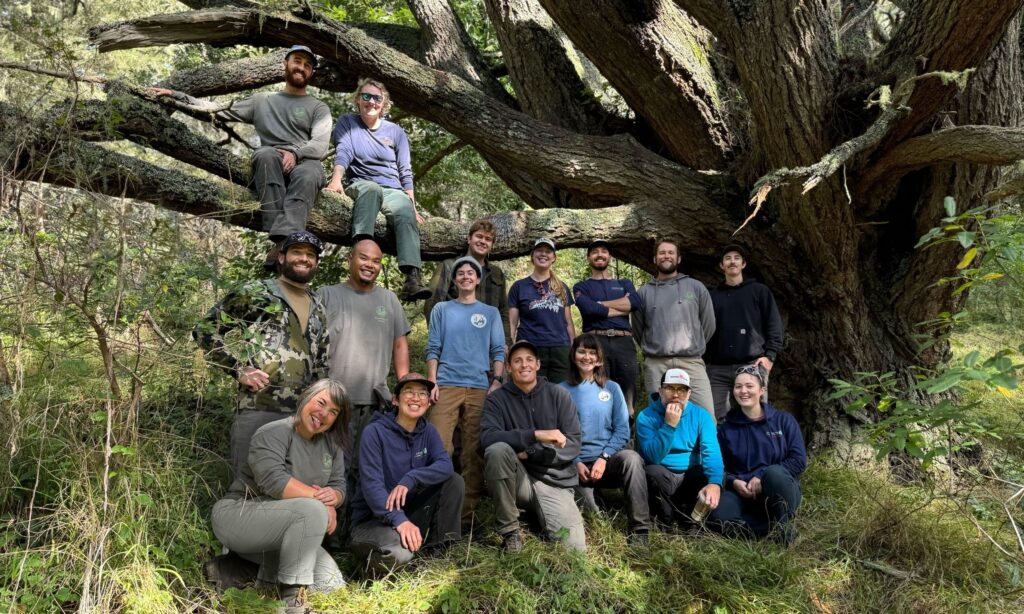
Training people to safely use “good fire” builds resilient communities
Since 2017, more than 500 North Bay residents have gained skills with us to steward thousands of acres with prescribed fire and restore ecosystem health. Learn more about our Fire Forward program at allhandsecology.org/fire-forward/.

